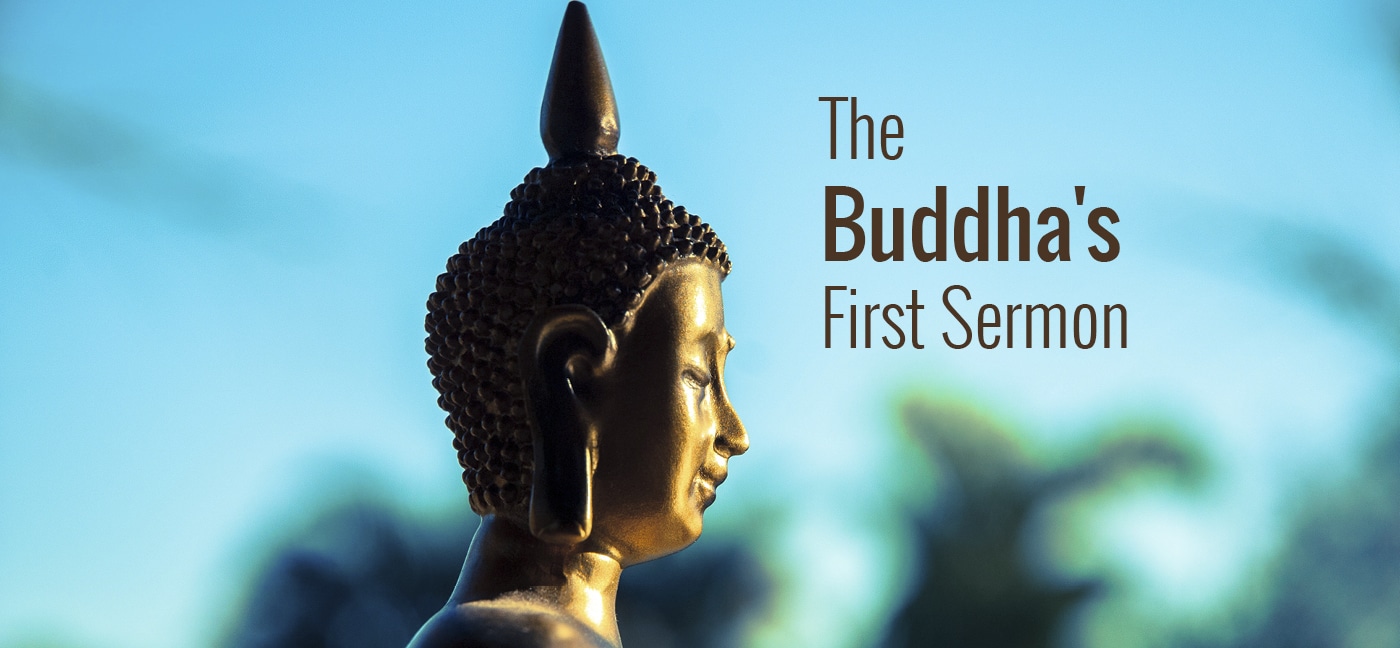The Buddha’s First Sermon — A path to happiness for all faiths
Jenny Campbell

Hundreds of years ago in a field in Deer Park in modern-day India, a man sat across from five ascetics (people who have a strict and simple way of living that avoids physical pleasure). This man had been the son of a wealthy family, a sort of prince, living a sheltered and easy life inside the walls of his palaces. But one day he ventured outside the walls, and was confronted with a world he did not expect—one full of sadness, pain and suffering. He went on a religious quest to find the end to suffering, and had joined the ascetics hoping to find truth through their severe practices. But he now he sat before his former companions bathed, clothed and with a full belly. He’d had an Awakening. And had come to teach them a new way to Enlightenment.
That’s how tradition sets the stage for the first sermon of Siddhārtha Gautama—the Buddha. Historians don’t always agree on the exact year or place, or even if this was his first sermon chronologically. But the ideas laid out in this sermon provide a foundational framework for major Buddhist thought that can inspire and teach people of all faiths and backgrounds.
This sermon, or sutra, according to Buddhism scholar Justin McDaniel, “lays out the basic motivation of why you should take up the path to Awakening.” The Buddha termed this path the “middle way” between the harsh austerity of the ascetics he taught and the luxuries and opulence he had seen in his own upbringing. A key to understanding Four Noble Truths. These Truths, says Christopher Ross-Leibow, a buddhist teacher, “diagnose a problem, diagnose the cause of the problem and then the remedy to the problem.” The problem is the same one that set the Buddha out from his palace in the beginning: suffering. The Buddha called this suffering dukkha—the first Truth.
McDaniel says, “A lot of people say, ‘Oh, it says life is suffering.’ Well that’s not true at all.” Instead, the sutra says “all people suffer because they misperceive certain things. They misperceive permanence, they misperceive the nature of substance or self and they misperceive the nature of suffering.” People, the Buddha taught, crave and cling to these misperceptions, which causes a state of dissatisfaction. “Dukkha is the suffering that comes when we want some things to be different than they are,” Ross-Leibow says. This is the second Truth.
That there is a way to cease this suffering is the Third Truth. “The way out of that pain, or dissatisfaction or malaise or whatever you want to say—existential despair—is to take up a path of discipline, meditation for contemplation, and development of wisdom about the nature of reality,” says Daniels. The path to end suffering is contained in the Fourth Truth and termed the Eightfold Path: right view, right resolve, right speech, right conduct, right livelihood, right effort, right mindfulness, and right meditation.
“The greatest thing about it,” Ross-Leibow says, “is that anybody can practice part of the Eightfold Path—it doesn’t matter what faith tradition you come from.” One of his favorites is “right speech,” which he calls “a straightforward and powerful spiritual practice.” For example, gossip—whether that be among friends, in a church congregation, or at work—goes against the idea of right speech, and anyone can benefit from striving to keep their language “healing and not harming.” Each of the steps in the eightfold path lends itself to deep study, interpretation and the possibility of personal change.
McDaniel says this sermon is straightforward and not as lyrical as some of the other of the Buddha’s sutras, but that it’s “incredibly useful” to people of all level of understanding. “There’s multiple paths to liberate yourself from suffering, it really doesn’t matter if you’re Buddhist or not, it doesn’t matter if you even know how to spell Buddha properly.”
“I think a lot of it depends on the soil of a person’s life,” says Ross-Leibow. “Has the soil been tilled and is it ready to take the seeds of the teaching, whatever they may be?” Those dealing with suffering will especially be moved by the words of the sermon, and may have their interest sparked to dive deeper into the other sutras.
For Ross-Leibow, one of the greatest gifts of studying and following the tenets of this sutra was that it “gave birth to a greater compassion for my brothers and sisters.” He says anger, bitterness, pettiness and fear in people is a sign of suffering. “My first response isn’t reflecting back their suffering, but my first response is compassion to that suffering.” If people can come to understand not only their own, but other people’s suffering, Ross-Leibow believes “we could see a transformation.” Because of that, “I think it’s more relevant to today’s world than maybe it’s ever been.”
These are a few lessons that can be drawn from this sutra. Because of the broad reach of these foundational doctrines and the fluid, interpretive nature of Buddhism, this text has much to offer anyone looking for any form of spiritual enlightenment or renewal.
Justin McDaniel is a Chair of the Department of Religious Studies at the University of Pennsylvania, and teaches courses in Buddhist studies and religion in Asia.
Christopher Ross-Leibow is the leader of the Salt Lake Buddhist Fellowship.
![]()